


| Vehicle | Precise engine size | Difference from world average | Engine size to consumption ratio | Horsepower from 1 L | Engine size to 100 kg of weight |
|---|---|---|---|---|---|
| 2.0 TFSI |
1.98 L (1984 cc) |
15.4% smaller | 57 cc to 1 mpg | 152 hp from 1 L | 132 cc to 100 kg |
| Vehicle | 2.0 TFSI |
|---|---|
| Precise engine size | 1.98 L (1984 cc) |
| Difference from world average | 15.4 smaller |
| Engine size to consumption ratio | 57 cc to 1 mpg |
| Horsepower from 1 L | 152 hp from 1 L |
| Engine size to 100 kg of weight | 132 cc to 100 kg |
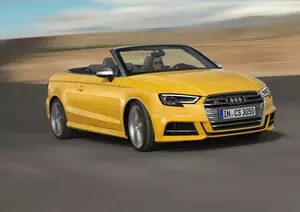
| Vehicle | Precise engine size | Difference from world average | Engine size to consumption ratio | Horsepower from 1 L | Engine size to 100 kg of weight |
|---|---|---|---|---|---|
| 2.0 TFSI |
1.98 L (1984 cc) |
15.4% smaller | 60 cc to 1 mpg | 152 hp from 1 L | 117 cc to 100 kg |
| Vehicle | 2.0 TFSI |
|---|---|
| Precise engine size | 1.98 L (1984 cc) |
| Difference from world average | 15.4 smaller |
| Engine size to consumption ratio | 60 cc to 1 mpg |
| Horsepower from 1 L | 152 hp from 1 L |
| Engine size to 100 kg of weight | 117 cc to 100 kg |
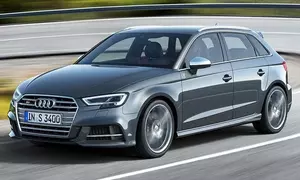
| Vehicle | Precise engine size | Difference from world average | Engine size to consumption ratio | Horsepower from 1 L | Engine size to 100 kg of weight |
|---|---|---|---|---|---|
| 2.0 TFSI |
1.98 L (1984 cc) |
15.4% smaller | 57 cc to 1 mpg | 152 hp from 1 L | 132 cc to 100 kg |
| Vehicle | 2.0 TFSI |
|---|---|
| Precise engine size | 1.98 L (1984 cc) |
| Difference from world average | 15.4 smaller |
| Engine size to consumption ratio | 57 cc to 1 mpg |
| Horsepower from 1 L | 152 hp from 1 L |
| Engine size to 100 kg of weight | 132 cc to 100 kg |

| Vehicle | Precise engine size | Difference from world average | Engine size to consumption ratio | Horsepower from 1 L | Engine size to 100 kg of weight |
|---|---|---|---|---|---|
| 2.0 TFSI |
1.98 L (1984 cc) |
15.4% smaller | 54 cc to 1 mpg | 157 hp from 1 L | 142 cc to 100 kg |
| Vehicle | 2.0 TFSI |
|---|---|
| Precise engine size | 1.98 L (1984 cc) |
| Difference from world average | 15.4 smaller |
| Engine size to consumption ratio | 54 cc to 1 mpg |
| Horsepower from 1 L | 157 hp from 1 L |
| Engine size to 100 kg of weight | 142 cc to 100 kg |

| Vehicle | Precise engine size | Difference from world average | Engine size to consumption ratio | Horsepower from 1 L | Engine size to 100 kg of weight |
|---|---|---|---|---|---|
| 2.0 TFSI |
1.98 L (1984 cc) |
15.4% smaller | 60 cc to 1 mpg | 152 hp from 1 L | 124 cc to 100 kg |
| Vehicle | 2.0 TFSI |
|---|---|
| Precise engine size | 1.98 L (1984 cc) |
| Difference from world average | 15.4 smaller |
| Engine size to consumption ratio | 60 cc to 1 mpg |
| Horsepower from 1 L | 152 hp from 1 L |
| Engine size to 100 kg of weight | 124 cc to 100 kg |

| Vehicle | Precise engine size | Difference from world average | Engine size to consumption ratio | Horsepower from 1 L | Engine size to 100 kg of weight |
|---|---|---|---|---|---|
| 2.0 TFSI |
1.98 L (1984 cc) |
15.4% smaller | 58 cc to 1 mpg | 152 hp from 1 L | 142 cc to 100 kg |
| Vehicle | 2.0 TFSI |
|---|---|
| Precise engine size | 1.98 L (1984 cc) |
| Difference from world average | 15.4 smaller |
| Engine size to consumption ratio | 58 cc to 1 mpg |
| Horsepower from 1 L | 152 hp from 1 L |
| Engine size to 100 kg of weight | 142 cc to 100 kg |
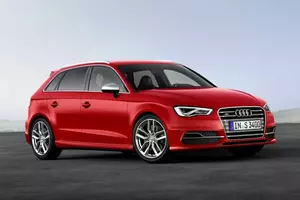
| Vehicle | Precise engine size | Difference from world average | Engine size to consumption ratio | Horsepower from 1 L | Engine size to 100 kg of weight |
|---|---|---|---|---|---|
| 2.0 TFSI |
1.98 L (1984 cc) |
15.4% smaller | 58 cc to 1 mpg | 152 hp from 1 L | 132 cc to 100 kg |
| Vehicle | 2.0 TFSI |
|---|---|
| Precise engine size | 1.98 L (1984 cc) |
| Difference from world average | 15.4 smaller |
| Engine size to consumption ratio | 58 cc to 1 mpg |
| Horsepower from 1 L | 152 hp from 1 L |
| Engine size to 100 kg of weight | 132 cc to 100 kg |
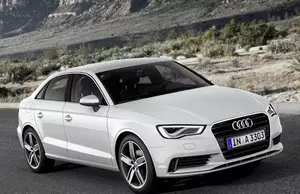
| Vehicle | Precise engine size | Difference from world average | Engine size to consumption ratio | Horsepower from 1 L | Engine size to 100 kg of weight |
|---|---|---|---|---|---|
| 2.0 TFSI |
1.98 L (1984 cc) |
15.4% smaller | 58 cc to 1 mpg | 152 hp from 1 L | 132 cc to 100 kg |
| Vehicle | 2.0 TFSI |
|---|---|
| Precise engine size | 1.98 L (1984 cc) |
| Difference from world average | 15.4 smaller |
| Engine size to consumption ratio | 58 cc to 1 mpg |
| Horsepower from 1 L | 152 hp from 1 L |
| Engine size to 100 kg of weight | 132 cc to 100 kg |

| Vehicle | Precise engine size | Difference from world average | Engine size to consumption ratio | Horsepower from 1 L | Engine size to 100 kg of weight |
|---|---|---|---|---|---|
| 2.0 TFSI |
1.98 L (1984 cc) |
15.4% smaller | 71 cc to 1 mpg | 129 hp from 1 L | 132 cc to 100 kg |
| Vehicle | 2.0 TFSI |
|---|---|
| Precise engine size | 1.98 L (1984 cc) |
| Difference from world average | 15.4 smaller |
| Engine size to consumption ratio | 71 cc to 1 mpg |
| Horsepower from 1 L | 129 hp from 1 L |
| Engine size to 100 kg of weight | 132 cc to 100 kg |
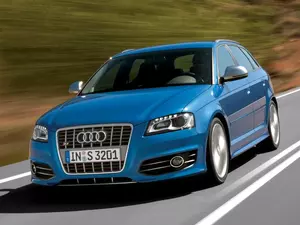
| Vehicle | Precise engine size | Difference from world average | Engine size to consumption ratio | Horsepower from 1 L | Engine size to 100 kg of weight |
|---|---|---|---|---|---|
| 2.0 TFSI |
1.98 L (1984 cc) |
15.4% smaller | 71 cc to 1 mpg | 129 hp from 1 L | 132 cc to 100 kg |
| 2.0 TDI Clubsport |
1.97 L (1968 cc) |
16.1% smaller | - | 115 hp from 1 L | 131 cc to 100 kg |
| Vehicle | 2.0 TFSI |
|---|---|
| Precise engine size | 1.98 L (1984 cc) |
| Difference from world average | 15.4 smaller |
| Engine size to consumption ratio | 71 cc to 1 mpg |
| Horsepower from 1 L | 129 hp from 1 L |
| Engine size to 100 kg of weight | 132 cc to 100 kg |
| Vehicle | 2.0 TDI Clubsport |
| Precise engine size | 1.97 L (1968 cc) |
| Difference from world average | 16.1 smaller |
| Engine size to consumption ratio | - |
| Horsepower from 1 L | 115 hp from 1 L |
| Engine size to 100 kg of weight | 131 cc to 100 kg |

| Vehicle | Precise engine size | Difference from world average | Engine size to consumption ratio | Horsepower from 1 L | Engine size to 100 kg of weight |
|---|---|---|---|---|---|
| 2.0 TFSI |
1.98 L (1984 cc) |
15.4% smaller | 76 cc to 1 mpg | 134 hp from 1 L | 132 cc to 100 kg |
| Vehicle | 2.0 TFSI |
|---|---|
| Precise engine size | 1.98 L (1984 cc) |
| Difference from world average | 15.4 smaller |
| Engine size to consumption ratio | 76 cc to 1 mpg |
| Horsepower from 1 L | 134 hp from 1 L |
| Engine size to 100 kg of weight | 132 cc to 100 kg |
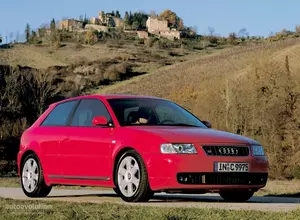
| Vehicle | Precise engine size | Difference from world average | Engine size to consumption ratio | Horsepower from 1 L | Engine size to 100 kg of weight |
|---|---|---|---|---|---|
| 1.8 T |
1.78 L (1781 cc) |
24.1% smaller | 71 cc to 1 mpg | 126 hp from 1 L | 127 cc to 100 kg |
| Vehicle | 1.8 T |
|---|---|
| Precise engine size | 1.78 L (1781 cc) |
| Difference from world average | 24.1 smaller |
| Engine size to consumption ratio | 71 cc to 1 mpg |
| Horsepower from 1 L | 126 hp from 1 L |
| Engine size to 100 kg of weight | 127 cc to 100 kg |